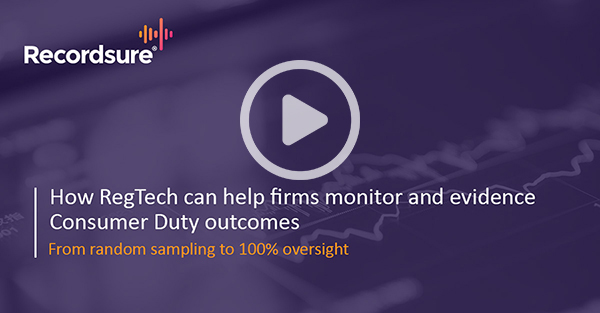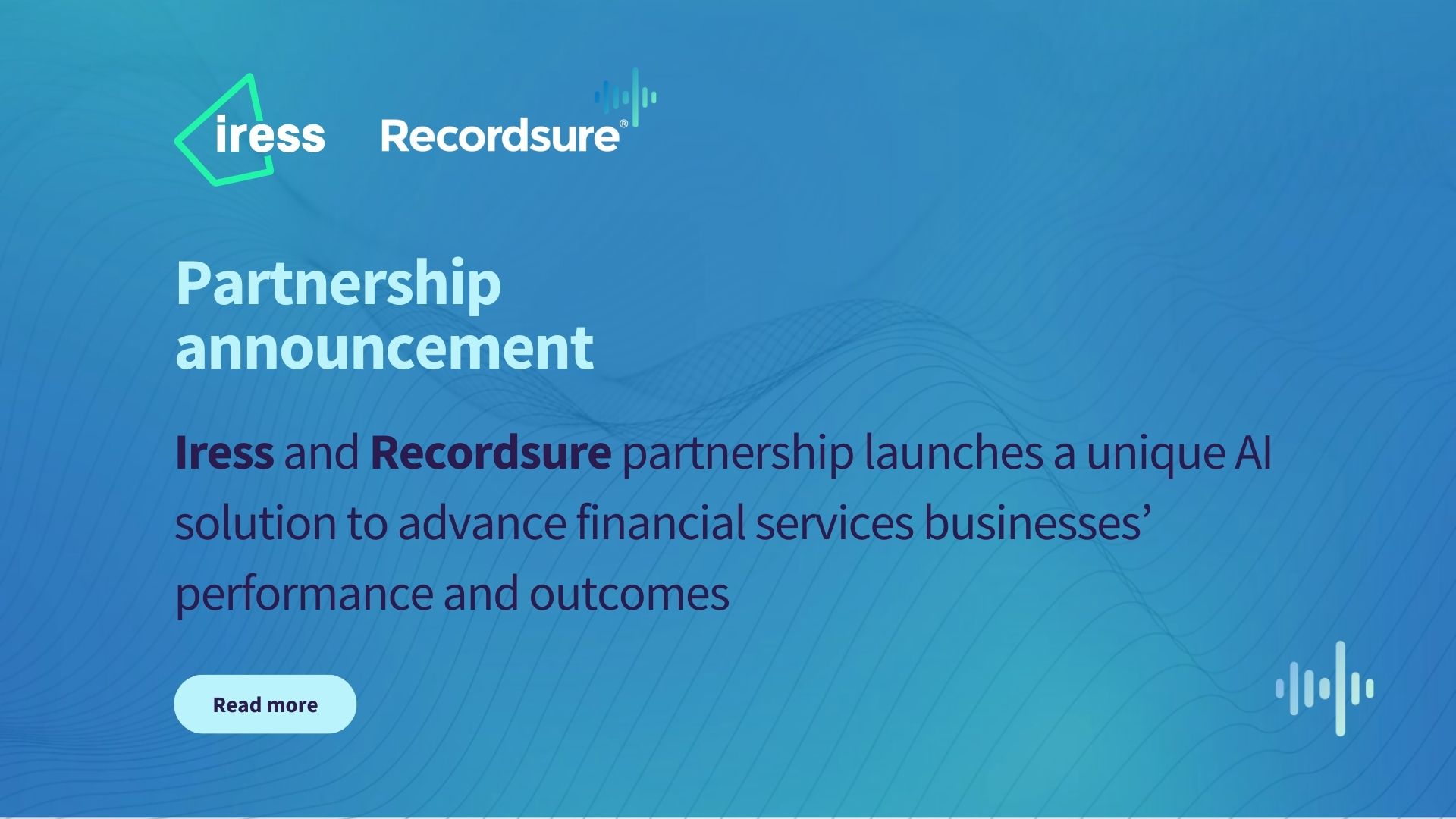We were delighted to be joined by Arum’s Group Director of Debt Policy and Strategy, Steven Coppard, for our recent webinar on how firms can optimise their Consumer Duty monitoring and evidencing strategy.
Hosted by Recordsure’s Chief Product & Commercial Officer, Garry Evans, this info-packed discussion took a deep dive into the challenges facing Collections & Recoveries firms in the run-up to the Consumer Duty and the tech-driven solutions that could hold the key to sustainable compliance.
If you missed the session, you can watch the full webcast again here. Or alternatively, read our recap below for our top three takeaways from the event.
Lesson #1: Firms can’t afford to be complacent about Consumer Duty
Whilst many major banks and other larger entities have seemingly understood the sheer scale of work needed ahead of the Consumer Duty, there’s been a sense from some quarters of the industry that smaller firms – particularly credit unions – have been less engaged.
Indeed, some organisations are still under the impression that ‘we’ve been putting customers at the heart of everything we do for years, so we’ll be fine to carry on as usual’. However, while it may be true that the Consumer Duty agenda is chiefly aimed more at the retail end of the financial services sphere, that doesn’t mean credit firms can simply put their feet up.
This lack of clear initiative from some firms may partly be down to the FCA’s decision to take a less prescriptive path to enforce the new legislation, opting instead for a ‘principles over rules’ approach. For instance, the Consumer Duty places emphasis on evidencing good outcomes along every step of the customer lifecycle. But defining what a ‘good’ outcome looks like requires being able to accurately quantify and articulate the outcome of every single process, which presents a huge logistical challenge for many businesses.
To this end, it’s important to note that the FCA will be willing to help firms iron out these issues – provided they’ve shown a willingness to work towards the spirit of the rules. It goes without saying, though, that it’ll take a much dimmer view on those that have barely tried.
The FCA’s Sheldon Mills echoed this sentiment in a recent speech, which clarified that the regulator would prioritise the most serious breaches and take swift action – including further investigations and disciplinary sanctions – where it finds evidence of harm or risk to consumers.
And so, even if there’s still work to be done, it’s vital that firms can demonstrate they’ve bought into the new rules now and are actively taking steps to align with the regulator’s vision for the future.
Lesson #2: Consumer Duty puts the onus on firms like never before
Exactly what changes you need to make to your systems and processes inevitably depends on the function at hand. For instance, if you’re primarily focused on collections and resolutions processes (e.g. debt collection), then you’d want to focus most of your attention on being able to consistently evidence good outcomes.
With the judgement as to whether you’re achieving good outcomes now placed in your hands, you need to ensure you’re transparent in your reasoning – and can show your working along with clear audit trails, when the regulator comes knocking.
For larger firms such as retail banks, you’re expected to track the entirety of the customer lifecycle – from initial product design through to post-sale support – and gather outcome data from each stage to confirm that the intended outcome has been achieved. In most cases, this also involves eliminating any remaining ‘sludge’ practices and roadblocks in the customer experience that discourage them from taking constructive actions.
So, if customers are receiving disparate speeds of service depending on the help they’re seeking – for example, taking out a credit card compared with debt assistance – this needs addressing. The FCA will want to see your proactiveness in finding new ways to help customers achieve their financial goals.
Put simply: if firms are still under the impression that Consumer Duty is a repackaged version of the Treating Customers Fairly (TCF) standard, they haven’t fully understood the assignment yet.
And that’s because TCF, at its core, was about having the right elements in place to enable fair treatment, including culture, frameworks and infrastructure. Yet Consumer Duty goes much further, requiring firms to clearly evidence that good – not just fair – outcomes are genuinely being achieved for customers.
Lesson #3: It’s time to move away from random sampling
As the Consumer Duty requires firms to evidence statistically significant sample sizes and trend information, many firms are likely to find their biggest challenge is scaling up the volume of call reviews they’re able to sustain.
After all, this isn’t simply TCF by another name – and the FCA’s new ‘show me, don’t tell me’ approach means it’s no longer sufficient to simply outline your vulnerability process and confirm staff have sat through the training. You need to provide hard data.
In years gone by, most firms have relied on random sampling techniques for their QA process – with many checking over a low-single-digit percentage of calls and crossing their fingers that they paint a representative picture.
But one obvious drawback with this approach is that many of the cases selected wouldn’t be those where something went wrong. And so you could only ever identify poor outcomes from a fraction of an already small percentage of cases – making it impossible to get an accurate view of performance and where risks truly lie.
With the arrival of the Consumer Duty, you need to show you’re proactively and systematically reviewing a much larger number of calls – and beyond that, that you’re discussing negative outcomes at the Board level to ensure the right lessons are learned.
The FCA will want to see that you’re highlighting thematic trends and using them to inform feedback loops that drive long-term positive change. You can only do this if you’re able to review enough outcomes – especially negative ones – in the first place!
Yet, few firms are likely to welcome demands to double or triple their QA resource – and if everyone’s in the same boat, it could potentially get more expensive and harder to come by the right human skilled resource for the job.
So, what’s the solution?
ReviewAI: Introducing AI RegTech
By taking a targeted, risk-based approach enhanced by Artificial Intelligence (AI) capabilities, firms are able to minimise the amount of time wasted along the QA process like never before.
Our Machine Learning systems enable you to input your own personalised QA framework and identify – with unrivalled accuracy – the calls that are likely to be problematic.
With Recordsure’s ReviewAI tool at your disposal, you can direct your human reviewers’ attention straight to where it’s truly needed, enabling your team to handle twice as many call reviews as before.
When you’re no longer spending the majority of your review and QA time on calls that are absolutely fine, you’ll be able to focus up to 90% of your time on high-risk cases – and ultimately enable your team to do more with the resource they currently have.
And so, utilising ReviewAI tech, you can monitor, review and evidence your outcomes more effectively and cost-efficiently than ever before.







